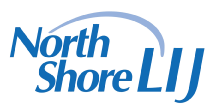- Home
- Media Kit
- Current Issue
- Past Issues
- Ad Specs-Submission
- Ad Print Settings
- Reprints (PDF)
- Photo Specifications (PDF)
- Contact Us

![]()
ONLINE

Building a Learning Organization
Editors’ Note
Kathleen Gallo held several previous positions at North Shore-LIJ, including System Administrative Director of Emergency Medicine and Vice President of Emergency Medical Services, and has more than 25 years of experience in emergency nursing, comprising a variety of clinical and administrative roles in tertiary care hospitals. She held several regional and national positions related to emergency medical services and emergency nursing, and has written numerous articles on trauma and nursing research. Gallo received her Bachelor of Science degree in nursing from the University of the State of New York, a Master of Science (Nursing) degree from Stony Brook University, and a Ph.D. in nursing and Masters in Business Administration from Adelphi University.
How do you define your role within the North Shore-LIJ Health System?
I’m fortunate to be the first Chief Learning Officer in health care.
About 11 years ago, when Michael Dowling was preparing to become the CEO, I was Vice President of Emergency Services. He wrote a white paper on developing a leadership institute at North Shore-LIJ. He had studied other industries and spent some time at GE’s Leadership Institute in Crotonville, New York. GE’s Chief Learning Officer was the first ever, and he reported to Jack Welch. Mike asked me to read the paper and then asked me if I wanted to assume this role.
At that time, we had a training function within HR like most companies. Mike Dowling’s vision was to have a separate learning function strategically positioned and reporting to him. So we developed one – the Center for Learning and Innovation – in conjunction with the stakeholders. The learning strategy was connected to the goals and objectives of the organization in an effort to help the organization achieve its mission.
We recognized that, with a function like that in place, the culture would begin to change; instead of having discreet cultures in the different hospitals, it would create a consistent corporate learning culture.
A month into that process, Mike Dowling asked me to take on HR as well. He wanted somebody who would find a way to build a human resource function that was the gold standard. HR was transformed from a transactional department into one that is a strategic business partner of the organization. So HR is also helping us reach our goals and objectives.
We built a leadership development program, a Six Sigma/Lean program, and programs that are specifically designed for certain goals as well as a core management program for all middle managers. Five years ago, we opened up the Patient Safety Institute, a multidisciplinary clinical simulation center.
I created a dean structure so, for example, the Chief Financial Officer is the Dean of Finance; he and his team teach health care finance in our core management course. Having a CFO and his team in the same room as managers is pretty powerful with regard to intangibles in terms of value. Mike Dowling is the Dean of Leadership – he teaches in our leadership class. But beside content, it’s also about the value of communicating with frontline managers. The senior executive is communicating in a room with frontline managers for several hours.
The process of culture change and creating a learning organization is not the responsibility of one leader alone, but all of leadership.•